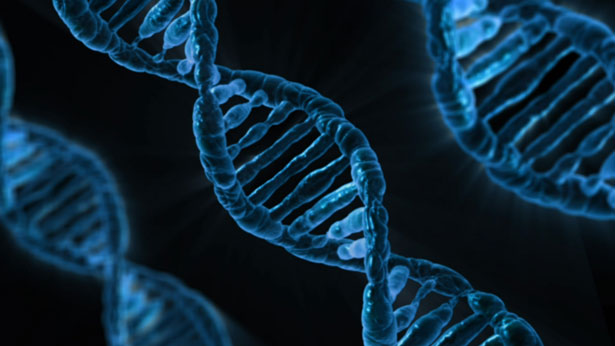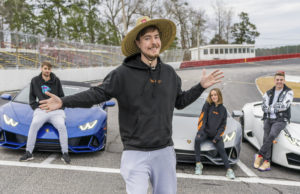From Corals to the classroom
How Dr. Kathleen Morrow’s research experience inspired the creation of a Microbial Genomics class
February 14, 2019
This spring, course selection sheets at Jefferson include a never-before-seen course: Microbial Genomics. Taught by Dr. Kathleen Morrow, rising juniors and seniors who have taken either IBET, DNA Science, or AP Biology will have the opportunity to sign up for this course, focused on providing students with a hands-on introduction to bioinformatics. The purpose of this class is to provide students with an introduction to analyzing biological data, incorporating a variety of learning techniques such as textbook reading, primary literature, and student-led research projects.
Before teaching high school, Morrow, a microbial genomicist, spent over 15 years in the research field. Morrow completed her PhDs as the field of data science arose.
“My research started out as marine ecology, morphed into microbiology, and ultimately became microbial ecology,” Morrow said. “I was studying the complex microbiomes associated with corals and sponges in the tropics and in order to do that I had to teach myself from the ground up basic bioinformatics.”
The idea for this class was in part inspired by Morrow’s experience as she realized the need for computer science techniques in order to expand upon the millions of data sets she had collected.
“We began generating huge quantities of data that we could no longer process in excel or in basic stats packages. The complexity of these data sets just required a whole other level of data analysis, and so the field of bioinformatics was born,” Morrow said.
As for the course, it is still in its early stages, and Morrow expects to refine the details of the curriculum throughout the course’s first years. She also plans on working with a couple computer science teachers this summer to further develop the course for its debut this fall.
“I will be working with Ms. Galanos, I think she has some bioinformatic experience,” Morrow said. “Mr. Torbert might have some experience in machine learning and neural network that I’m interested in potentially teaching, so I need to get some more information on those specific types of bioinformatics.”
Although by practice, Morrow is a microbial genomicist/bioinformatician, she does intend to allow students to go beyond the scope of this course if they are interested in doing so.
“The idea is that the databases out there are full of sequence data. DNA, RNA, and protein data can be analyzed with these tools in any number of ways depending on your question. And it’s just that I understand it from a microbial perspective,” Morrow said.
This class will be especially accessible to students because of the sheer magnitude of microbial data available to run algorithms on.
“I think 80% or so of the sequence reads in the freely available databases are microbial,” Morrow said. “But there’s more data than the scientists that are generating it can do anything with and it takes just one person to think about that data from a slightly different perspective and you have a completely new publication.”
Thus, students who are taking this class can expect to test their research questions in ways that have immediate significance to the scientific community.
It’s not beyond the realms of the possibility that the students in this class would be publishing independent research from the data that they are analyzing,” Morrow said. “And that’s why I pushed for it to be a year-long course because you can teach the tools in the semester, but you don’t know how to do this stuff unless you’re actually struggling with your own data sets and using the tools to try to figure out what that data is telling you.”
As for the challenges students can expect, Morrow anticipates the need to pool knowledge from a variety of sources given the vastness of bioinformatics as well as this being the first year the course is offered.
“It’s such a diverse topic that I’m going to be very transparent in the beginning of the class [by] saying [that] ‘I am not an expert.’ I have used the tools to do some specific things, but in biology there’s just so many things and if they want to do something that’s beyond my understanding, then they are going to have to figure that out independently,” Morrow said.
She plans to utilize the help of her colleagues, if necessary, to help students tackle certain challenging problems as they arise.
“I can pool in my colleagues from around the world who do this type of work too if there’s specific questions that we run into,” Morrow said. “So I think I’m in an interesting place to teach this class. “
Although microbial genomics is set to be a year long-course, Morrow plans on structuring the course into a two semester format. She plans on using the first semester to give students the major tools they would need to develop their own research projects.
“The first semester of the year would be very teacher-led where we would work through particular computer modules, learn specific tools, and how to apply those tools to data sets that I would give to the students. So we would be reading from a textbook and probably a lot of the primary literature,” Morrow said.
The second semester of this course would be more student-led and geared towards each students’ own interests based on the content they would have learned.
“And then [in] the second half of the year, I expect you to use the tools I’ve taught you and expand on those pools of databases in a way that I’ve taught you how to do, analyze it, write it up, and present it to the class and see what we can find,” Morrow said.
For now, the pre-requirements of this course concern courses in the biological sciences. However, Morrow strongly encourages prospective students to come in this fall with a foundational knowledge of computer science.
“I would personally say even if it’s not written there that introductory CS probably should be a requirement. But [with] most of what we are going to do you’re going to be hand-held a little bit through the modules and you’re going to be walked through them, regardless of your experience in computer science,” Morrow said.
Morrow hopes that students who take the course are able to gain practical knowledge that can be applied to any STEM career path they choose.
“This is an opportunity for us to marry these two disciplines that students at [Jefferson] are really good at-both biology, chemistry, physics, or geosystems, with computer science. Even students who have a stronger interest in computer science and only a slight interest in one of these sciences might be able to really excel in this field,” Morrow said.
Junior Divjot Bedi has signed up to take this course next year. He discusses his reasons to do so.
“I feel like this course is very instrumental in the combination of the biological field and the computer field. It is a real-life application of how we can use computers to enable us to increase our scientific understanding as well as understand more about biology through understanding more about technology,” Bedi said.
Bedi is interested in pursuing a career in biochemistry or the medical sciences, so he hopes to gain more experience for a degree through this course.
“I hope to get a rigorous understanding of scientific concepts in biology, chemistry, and computer science because I think these are very applicable to real-life scenarios in the future, Bedi said. “So I think it’s very important that we take the time to learn about how computers have been around for maybe a short amount of time-how they can be applied in biology and science.”
By the end of the course, Bedi hopes to have a research paper completed, which is one major component of the curriculum.
“Not only can I use [a research paper] as a publication, which can help me understand and learn more about the publication process, but I can also use this as a way to learn more about real-life research and how we can bring that from the classroom to real-life,” Bedi said.
As to what type of project he intends on doing, Bedi is still unsure.
“I know that I want to harness artificial intelligence techniques, but I’m still in the process of figuring it out. After I take the course, I think I will be more knowledgeable about the specifics,” Bedi said.






